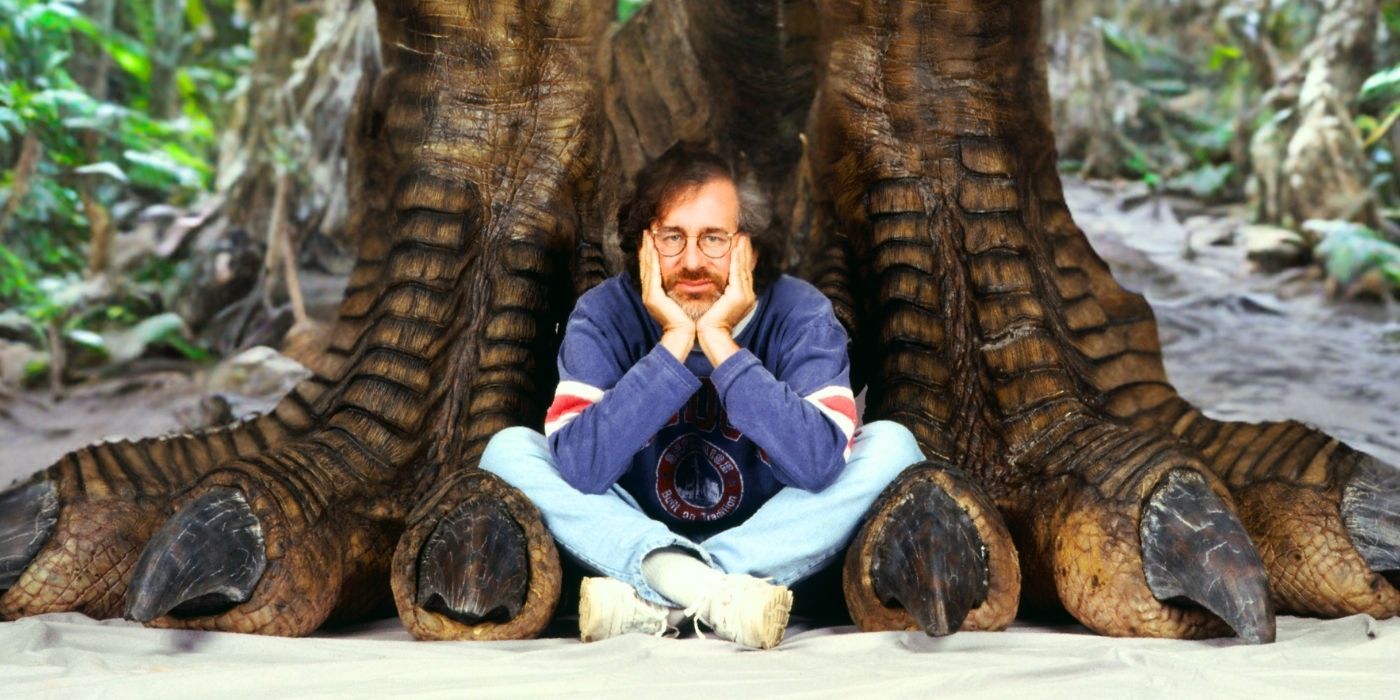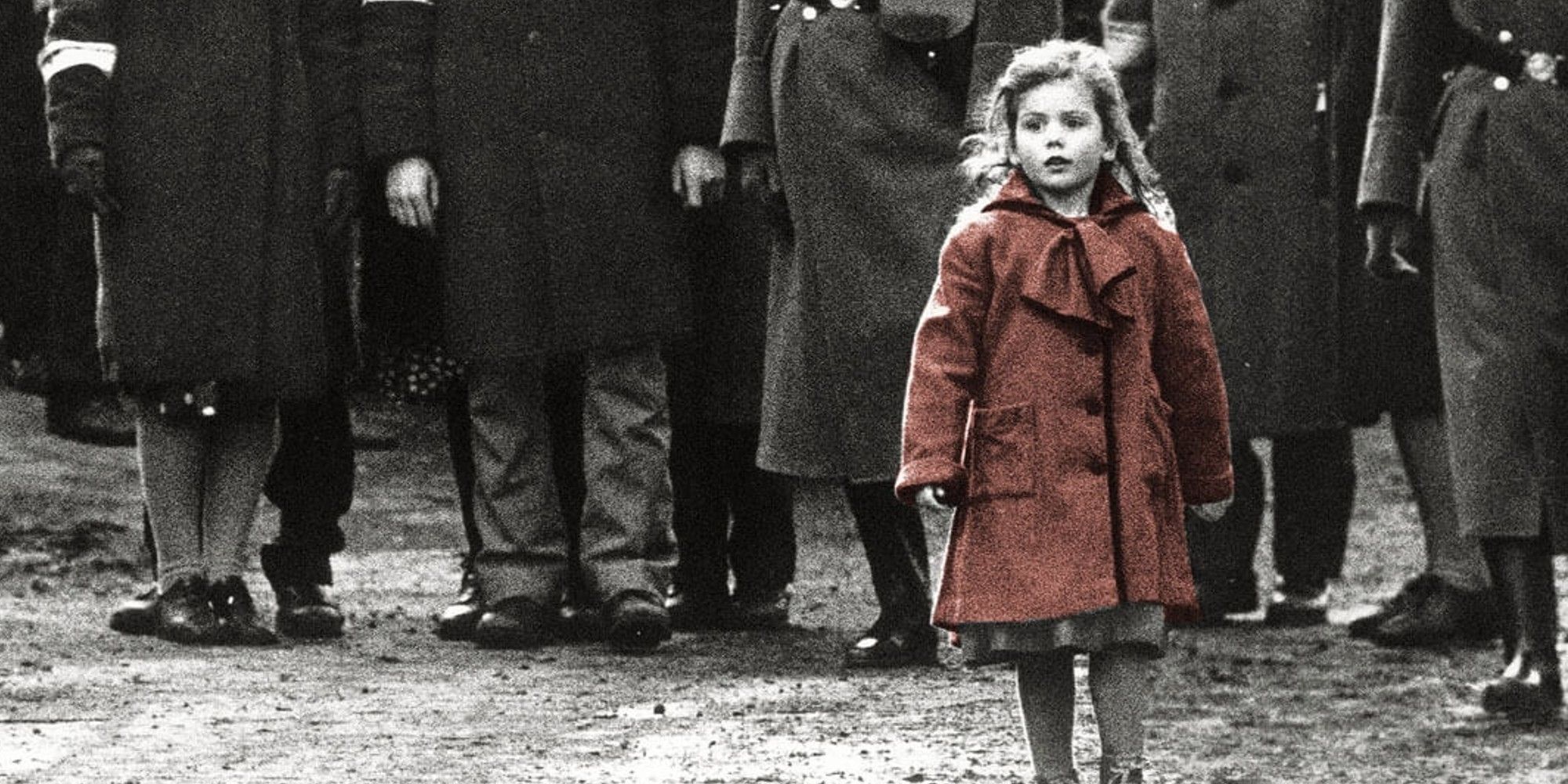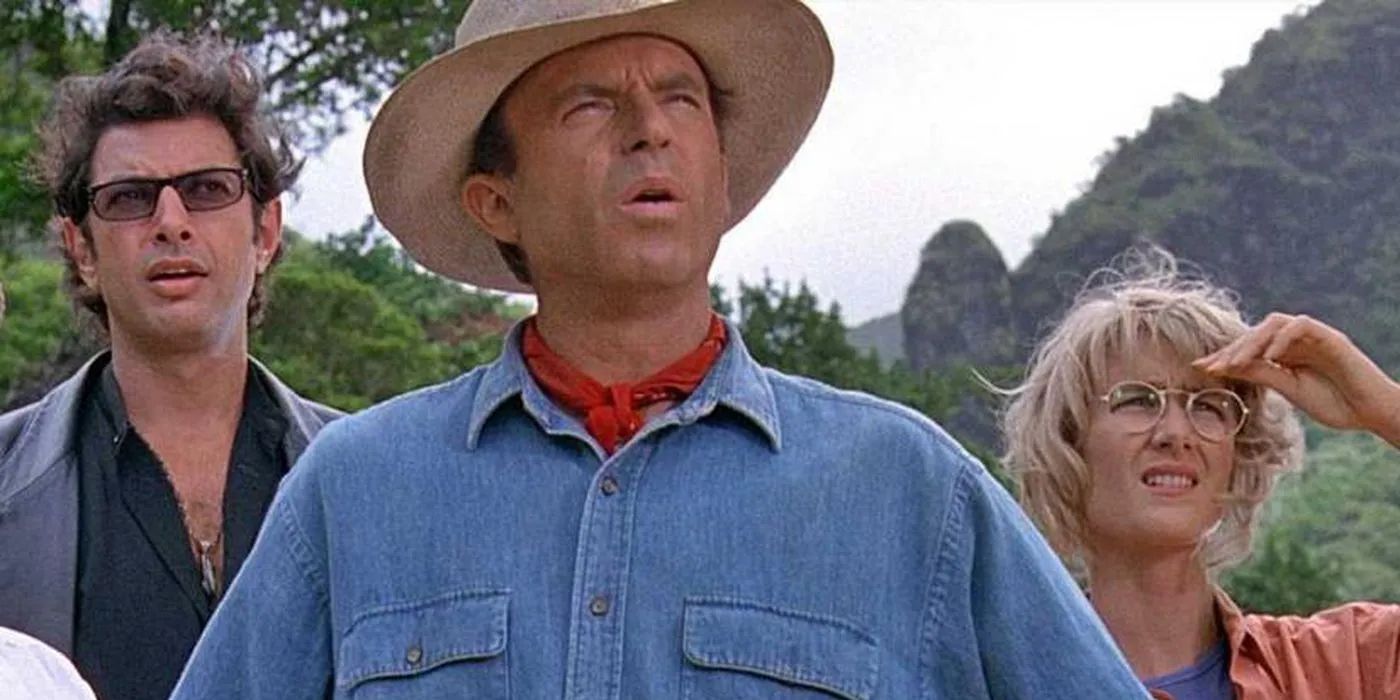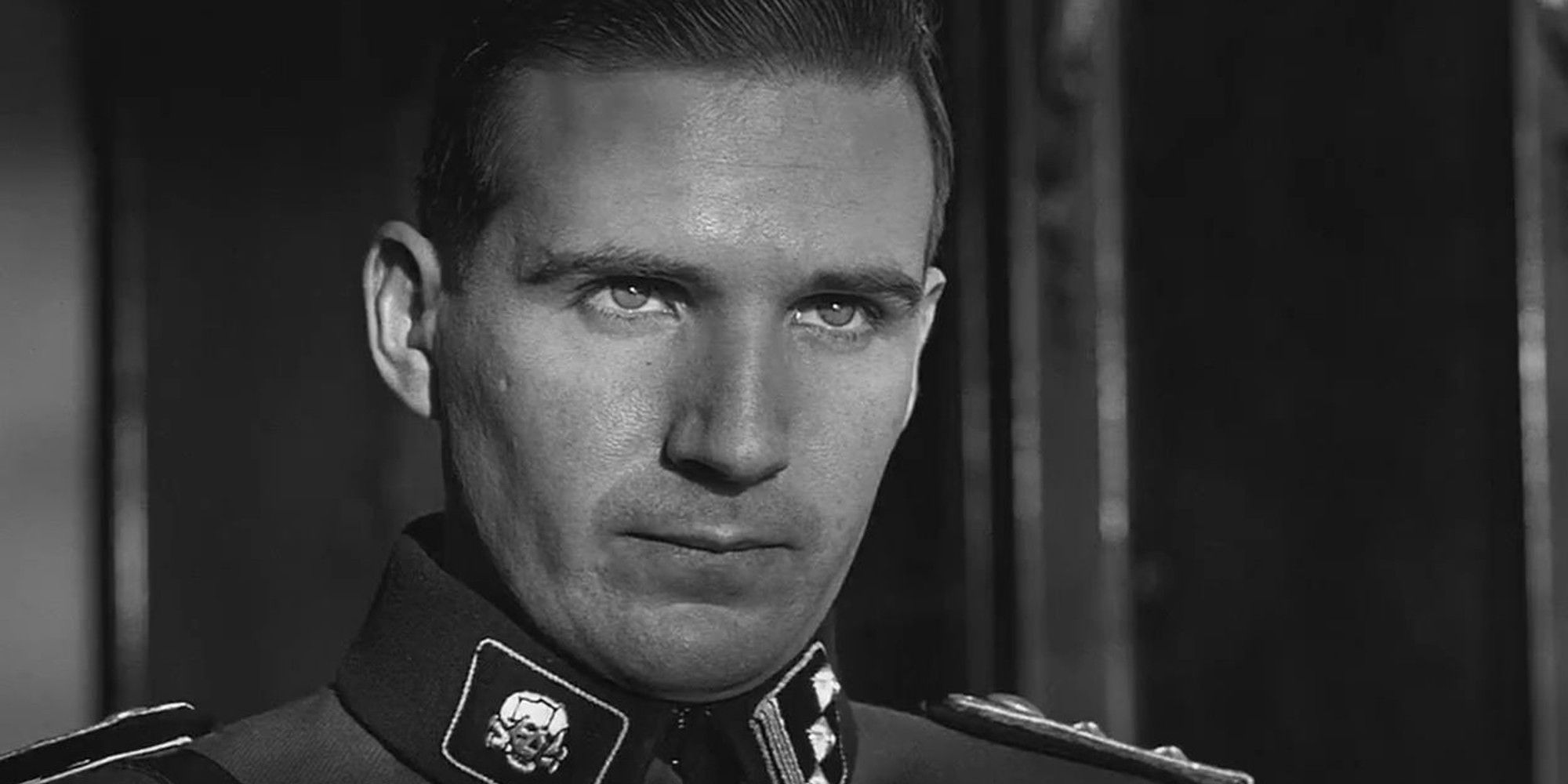It's not uncommon for a director to release multiple films in a single year. From Alfred Hitchcock to Ingmar Bergman and Francis Ford Coppola to Ridley Scott, a number of master filmmakers can lay claim to such a feat. Steven Spielberg is no exception to this distinction, having released two films in one year on six occasions throughout his prolific career. But it was the year 1993 that his one-two-punch of directing wrote a new chapter in his body of work and the history of cinema in general. With Jurassic Park and Schindler's List, films released just six months apart that couldn't be more different, Spielberg enjoyed what's likely his most commercially and critically successful year to date.
Steven Spielberg Jumps From Fantasy to Reality
Part of what makes cinematic storytelling so appealing is its seemingly unlimited and diverse capacity regarding content and artistic aesthetic. In equally powerful measure, the medium gives audiences pure escapism reflective of the most vivid imaginations, striking depictions of the harsh realities surrounding the human condition, and everything in between. Obviously no stranger to the power of imagination, Steven Spielberg firmly established himself with escapist fare and quickly earned a reputation as one of Hollywood's premier popcorn filmmakers. It wouldn't be until several years into his directorial career that he'd delve into more dramatic content that pushed his limits as a storyteller, a transition that began with E.T. The Extra Terrestrial.
According to the filmmaker, the 1982 fantasy film encouraged him to move beyond projects aimed at the masses, and to explore events, characters and themes based in history and raw authenticity. Just a few years after E.T., he dove into the complex nature of racial and gender dynamics with The Color Purple, and shortly thereafter took audiences into the grim realm of wartime internment and suffering with Empire of the Sun. By 1992, Spielberg was artistically and emotionally prepared to make his most mature leap yet in adapting Thomas Keneally's novel, Schindler's Ark, a project he'd been working towards for a decade. But first, and ultimately in conjunction, he'd write a new chapter in cinematic history with a seminal thrill ride stemming from the purest instincts of an escapist filmmaker.
Steven Spielberg Gambled on 'Jurassic Park'
As a longtime friend of Michael Crichton, Steven Spielberg got an early preview of the novelist's tale about dinosaurs brought back to life. After beating James Cameron to the punch in securing rights to the book, he shot Jurassic Park in Hawaii and California from August through November 1992. Though the production largely went off without a hitch, Spielberg and company were exploring uncharted territory in terms of special and visual effects. Originally intending to rely on stop-motion animation master Phil Tippet, the decision was made at the 11th hour to use evolving digital technology as a complement to Stan Winston's live-action animatronic wizardry. To say it was a bold move is an understatement.
Spielberg's said of the film's technological gamble, "There were a lot of risks involved in an art form that had never been perfected. A main character — a digital dinosaur — had never been done before for the movies. So in a way, Jurassic Park was the first movie that ever made its main characters — where the entire success or failure of the story was dependent on these digital characters — that was the first time that was ever done. And that was the risk I think all of us took." With principal photography completed, and kicking off a post-production schedule that presumably had Spielberg and his collaborators holding their collective breath, the filmmaker suddenly pivoted and undertook a very different kind of exercise in movie-making.
'Schindler's List' Is a Personal Turn for Steven Spielberg
Ten years after reading Thomas Keneally's book, a period that included extensive research, location scouting in Poland, and the development of a screenplay, Steven Spielberg made the snap decision to embark on his most personal cinematic journey yet. Having just wrapped on Jurassic Park, he read the latest draft of Schindler's List written by Steven Zailian, and the filmmaker recalls, "I knew when we got to page 167 that I had to make the movie now. I had to make the movie because I didn't want to miss the winter in Poland. I didn't want to have to wait a whole year, because it had to be shot in the snow."
After delegating much of the post-production responsibilities for Jurassic Park to producer Kathleen Kennedy and good friend George Lucas, Spielberg rolled cameras on Schindler's List in Krakow, Poland in March 1993. Abandoning many of his traditional cinematic tools, including the use of storyboards and slick camerawork, the filmmaker relied heavily on gut instinct and employed a stream-of-consciousness approach to telling the story of Oskar Schindler and the Holocaust. It was undoubtedly new and intimidating territory, both creatively and emotionally, and Spielberg's never been coy about the toll that making such a harrowing and personal film took on him. In a career retrospective, he said of the film's difficult production, and the importance of his family's presence on location, "It was an emotionally devastating experience to put those images on film. It's the only movie I can recall saying, 'Thank God I had these people in my life to get me through it.'"
As if recreating such grim historical events wasn't stressful enough, Spielberg was dealing with the added pressure of supervising Jurassic Park's complicated post-production via remote technology. He remembers, "I had to go home about two or three times a week and get on a very crude satellite feed to Northern California…to be able to approve T-Rex shots. And it built a tremendous amount of resentment and anger that I had to do this, that I had to actually go from the emotional weight of Schindler’s List to dinosaurs chasing jeeps, and all I could express was how angry that made me at the time. I was grateful later in June, though, but until then it was a burden."
Spielberg's Back-To-Back Commercial & Critical Success
June 1993 kicked off a level of success that would once again place Spielberg at the top of his game. By the end of its initial theatrical run, Jurassic Park had raked in more than $900 million worldwide, surpassing E.T. as the highest grossing film of all time. And aesthetically speaking, its advancement of computer generated effects dramatically demonstrated to filmmakers and audiences alike that emerging digital technology had reached a level of revolutionary storytelling efficacy. For better or worse, a new creative road was being paved, suggesting that filmmakers would no longer be limited to their imaginations or bound to the confines of practical logistics in realizing their dreams.
Just six months after Jurassic Park's hit theaters, Schindler's List was released on December 15. While the three-hour period drama would ultimately fare well at the box office, it more importantly became a milestone of modern cinema as far as reverential filmmaking honoring victims of historical tragedy, and represented a turning point for Spielberg in terms of tackling difficult material with unrestrained honesty and realism. In the years since the film's release, Spielberg has often been on record in claiming that Schindler's List is his crowning cinematic achievement. Reflecting on the film's impact on his personal and professional life, he said in 2018, "This is the most important experience I had being a film director and a storyteller."
On March 21, 1994, Spielberg received his first Academy Awards for Best Picture and Best Director, with Schindler's List ultimately taking home 7 statuettes and Jurassic Park receiving three (nearly half of the ceremony's awards in total). It was a bittersweet night for the filmmaker, the culmination of one of the most uniquely successful and groundbreaking years for any cinematic storyteller. He recalls of the experience, "That night wasn’t really a celebration at all. I don’t feel that this movie is a celebration. The subject matter and the impact the movie had on all of us…it took the celebration out of that."




